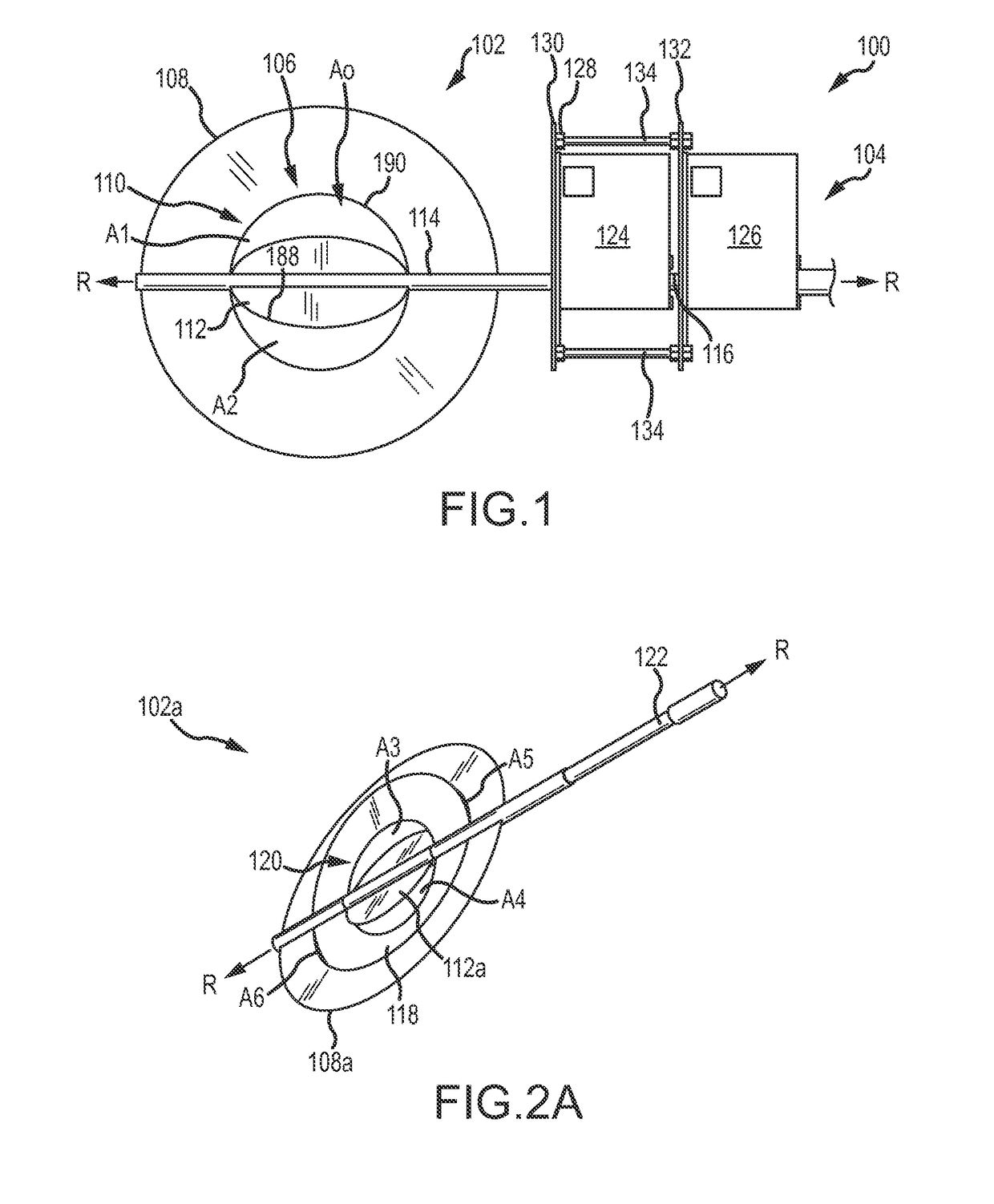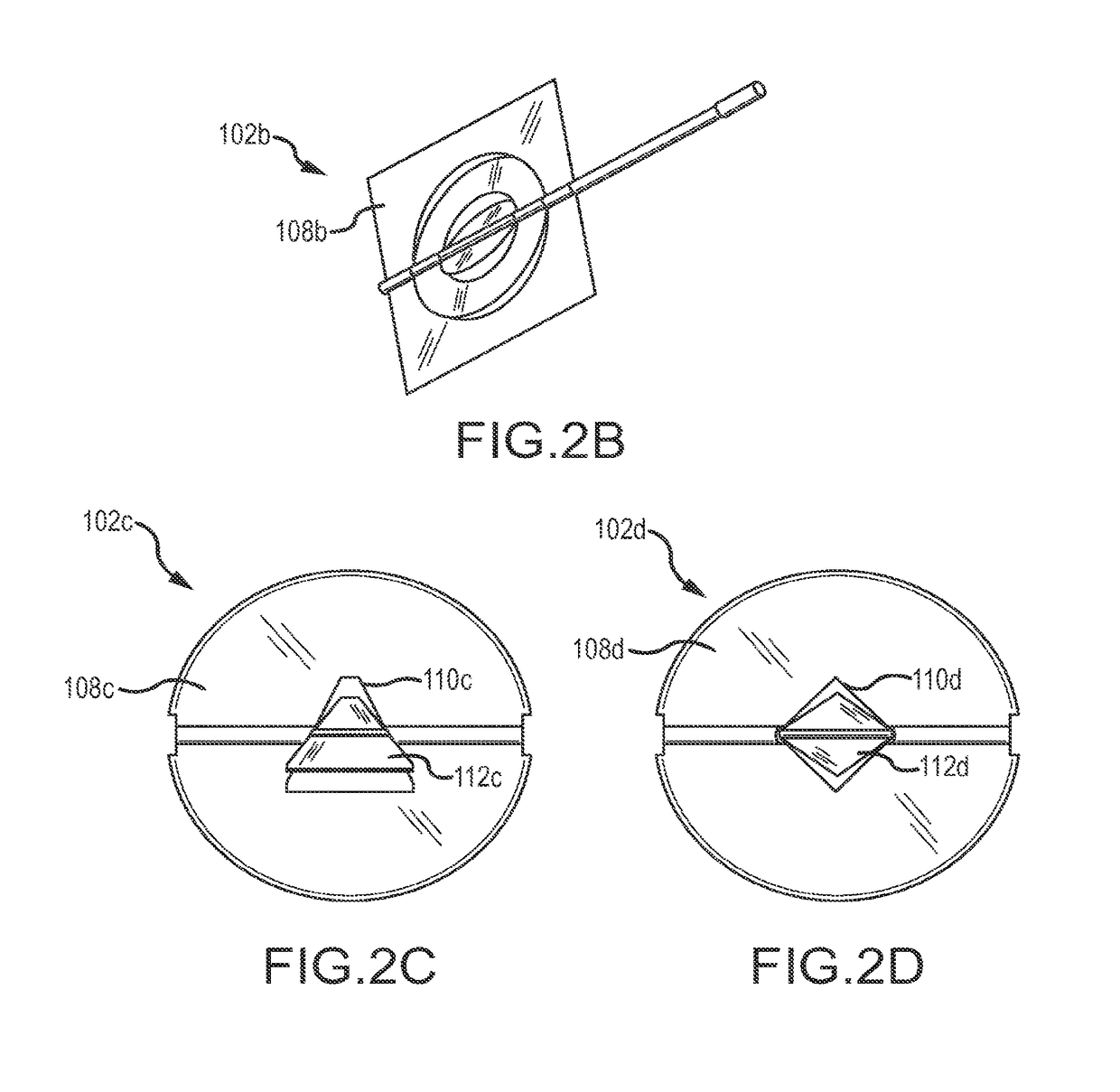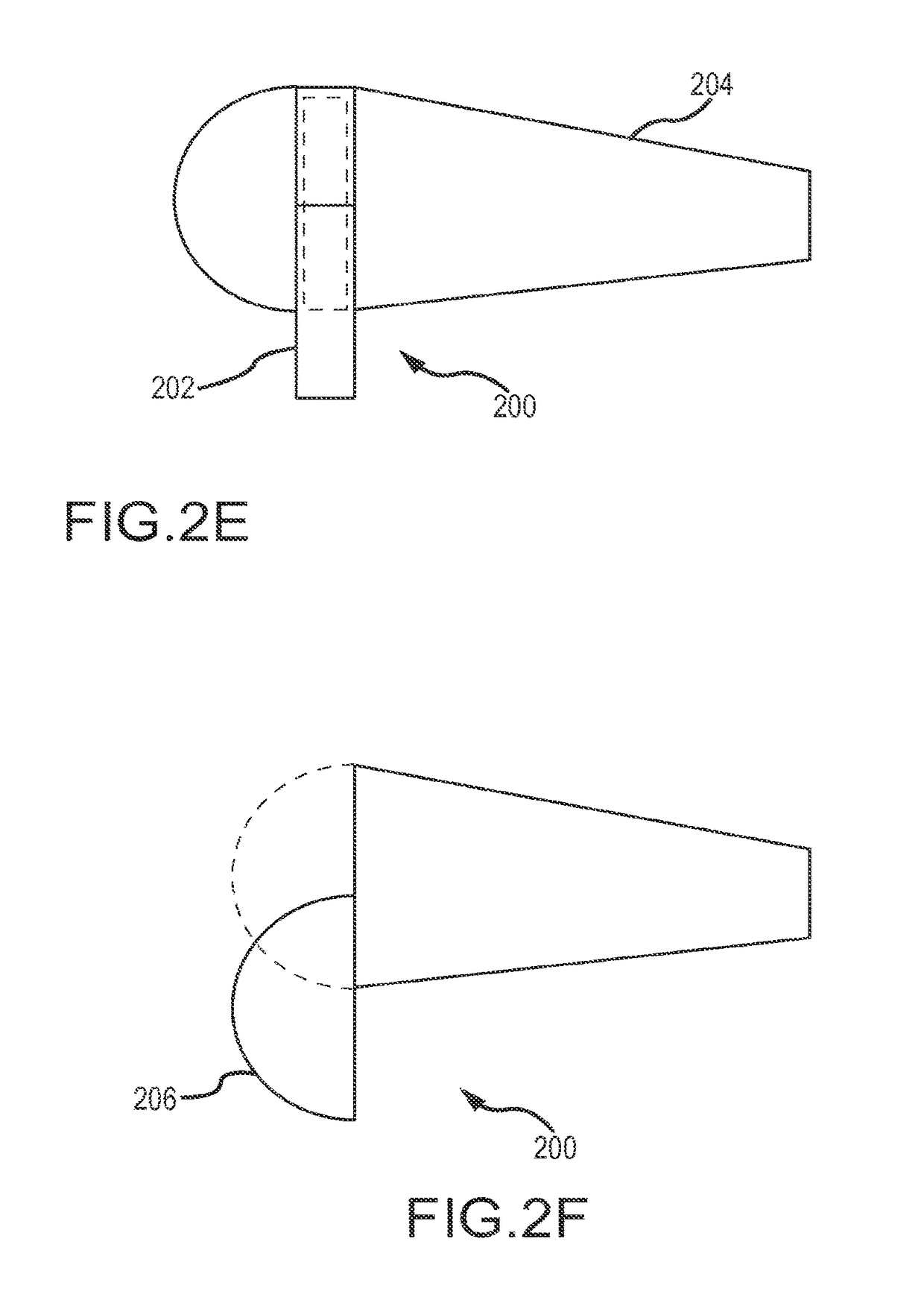Fluid control measuring and controlling device
a technology of measuring and controlling device and fluid flow, which is applied in the direction of program control, instruments, heating types, etc., can solve the problems of prohibitive cost of measuring low fluid flow, inability to support accurate measuring functionality of fluid flow, and high cost of measuring and regulating fluid flow, etc., to achieve the effect of optimizing energy consumption
- Summary
- Abstract
- Description
- Claims
- Application Information
AI Technical Summary
Benefits of technology
Problems solved by technology
Method used
Image
Examples
Embodiment Construction
[0078]The present disclosure describes a flow device, also referred to as a fluid control measuring device or a low flow fluid controller (“LFFC”), that offers a high turndown ratio for measuring and regulating various types of fluid flow, such as gaseous or liquid fluid flows having high or low velocity. It is noted that although the term LFFC may be used throughout the application, the flow device is applicable to a variety of fluid flows and is not limited to low flow. The LFFC can be incorporated into a duct, a self-contained heating, ventilation, and air conditioning (“HVAC”) equipment, or any air or fluid discharge or distribution device. Further, the LFFC is a smart device capable of interacting with other devices through a variety of networks, including Bluetooth, WiFi, 3G, 4G, and the like.
[0079]In some embodiments, the LFFC is a circular plate-like device that includes one or more damper regulators and / or fluid control valves mounted in series and / or parallel in a flow pat...
PUM
 Login to View More
Login to View More Abstract
Description
Claims
Application Information
 Login to View More
Login to View More - R&D
- Intellectual Property
- Life Sciences
- Materials
- Tech Scout
- Unparalleled Data Quality
- Higher Quality Content
- 60% Fewer Hallucinations
Browse by: Latest US Patents, China's latest patents, Technical Efficacy Thesaurus, Application Domain, Technology Topic, Popular Technical Reports.
© 2025 PatSnap. All rights reserved.Legal|Privacy policy|Modern Slavery Act Transparency Statement|Sitemap|About US| Contact US: help@patsnap.com



